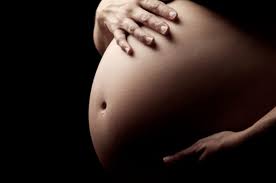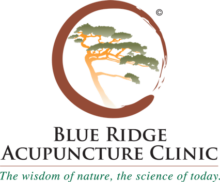by Nanci Bompey
published April 3, 2007 in the Asheville Citizen-Times
ASHEVILLE — Kristen Smith and her husband, Luke, have been trying to have a baby for more than four years. After rounds of hormone shots, unsuccessful infertility treatments and a miscarriage, the couple decided to try acupuncture.
“We’re just taking a break from traditional medicine, and we’re going to go with acupuncture,” Smith said. “We’ve basically tried everything we can, so there’s nothing to lose at this point.”

The 28-year-old Haywood County resident is one of a growing number of women who are looking to acupuncture to help in becoming pregnant.
While the technique has been used in China for thousands of years, it has only recently begun to catch on in the West.
“Women just don’t really know it’s an option yet,” said Asheville acupuncturist James Whittle.
Infertility affects more than 6 million women and their partners in the United States, or about 10 percent of the reproductive-age population, according to the American Society for Reproductive Medicine.
While most infertility cases, 85 percent to 90 percent, are treated with conventional therapies like medicine or surgery, some women are also starting to turn to acupuncture either alone or in conjunction with Western therapies.
Smith’s acupuncturist, Nicole Jurkovic Peterson, L.Ac., said in the three years since she opened her practice in Asheville, about 30 percent to 40 percent of her clients have been women with infertility problems.
“People are wanting answers and a different way of looking at infertility that hasn’t been explored enough,” Peterson said.
A holistic approach
Both Peterson and Whittle subscribe to the practices of Chinese medicine, which takes a holistic approach to diagnosing and treating patients.
Traditional Chinese medicine sees the body as a balance of two opposing forces: yin, or cold, and yang, or hot. Health is achieved through the maintenance of a balance of yin and yang, which practitioners balance through a patient’s diet, lifestyle, nutritional and herbal supplements, and acupuncture treatments.
During treatments, an acupuncturist uses a small, metallic needle on a series of acupuncture points that connect channels of energy in the body. The needles are used to regulate the flow of qi, or vital energy, through the body. A blockage of qi leads to an imbalance of yin and yang.
For women dealing with infertility, the process helps to balance their hormones, increase blood flow to the uterus, boost the immune system and relieve stress, all helping their body to conceive, Peterson said.
“I was a little bit skeptical at first because we’ve been through so many treatments before,” Smith said. “After seeing the results, I feel like we’re on the right track.”
Smith said while she isn’t pregnant yet, the acupuncture treatments and herbal supplements have given her more energy, helped to regulate her menstrual cycles, alleviated pain in her neck and helped her to feel more relaxed.
Rebecca Piersma had been trying to have a baby for nine months when she started acupuncture treatments with Peterson last fall. She is now three months pregnant.
“I feel like it is a really positive thing because it takes into account everything going on in your life,” said the 25-year-old Fairview woman. “I realized I had to give my body time.” .
Multiple benefits
Peterson said she has about a 65 percent success rate in treating infertility with acupuncture.
“I tell people give me six months, and if you’re not pregnant by then, go to Western therapy,” she said. “If nothing else, you’re going to feel really good, and your body’s going to be much more ready for Western therapy.”
Some studies suggest that acupuncture may help increase the effectiveness of in vitro fertilization, but the reason behind its effectiveness is still under investigation.
James Holman, an infertility specialist at the Center for Applied Reproductive Science in Asheville, said a lot of his patients undergo acupuncture along with their infertility treatments. While he is not sure to what extent it helps women to conceive, he does not discourage them.
“This is stressful, there’s just no question,” he said of infertility. “Acupuncture and some relaxation therapies can help you cope with it.”
Smith agreed the infertility treatments have put a strain on her body, and trying to conceive has been a source of stress in her life. The soothing music and aromatherapy used in acupuncture, and Jurkovic’s support, have helped her to relieve stress, which is good for her whether or not she becomes pregnant, she said.
“My husband and I just really needed a break.”
Smith said she is committed to trying acupuncture for six months but will go back to in vitro fertilization if the treatments are not successful on their own.
“I’m just not ready to give up yet,” Smith said.
Facts about acupuncture and Chinese medicine:
Acupuncture originated in China more than 2,000 years ago.
An estimated 8.2 million U.S. adults have used acupuncture and about 2.1 million U.S. adults have had acupuncture treatments in the previous year.
Acupuncture is the key component of traditional Chinese medicine, which sees the body as a balance of two opposing forces: yin (cold) and yang (hot). Health is achieved through the maintenance of a balance of yin and yang.
An imbalance of yin and yang leads to blockage of the flow of qi (pronounced ch-ee), or vital energy, along 12 main meridians of the body.
More than 2,000 acupuncture points on the human body connect the meridians.
During treatments, an acupuncturist uses a small, metallic needle on these points to regulate the flow of qi in the body.
Acupuncture treatments range in price from $100 – $130 for the first visit to $70 – $75 for follow-up visits.
Source: National Center for Complementary and Alternative Medicine, Blue Ridge Acupuncture Clinic and Ling Dao Acupuncture and Chinese Medicine.
Facts about infertility:
Infertility affects about 6.1 million women and their partners in the United States – about 10 percent of the reproductive-age population.
Most infertility cases – 85 percent to 90 percent – can be treated with conventional medical therapies such as medication or surgery.
Infertility affects both men and women in equal proportions. For 20 percent of couples, the cause of infertility is unexplained.
The most common male infertility factors include azoospermia, where no sperm cells are produced, and oligospermia, where few sperm cells are produced.
Ovulation disorder is the most common reason for female infertility. Other causes of infertility in women include blocked fallopian tubes, which can occur when a woman has had a pelvic inflammatory disease or endometriosis, a condition that causes adhesions or cysts.
In vitro fertilization (IVF) is a technique where eggs are surgically removed from the ovary and mixed with sperm outside the body. The fertilized embryo is then implanted into the woman’s uterus.
IVF accounts for less than 5 percent of all infertility treatments in the United States.
For women younger than 37 years old, one cycle of IVF results in a pregnancy about 40 percent of the time.
One cycle of IVF costs about $11,000.
Source: American Society for Reproductive Medicine and the Center for Applied Reproductive Science.
